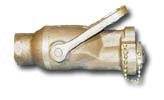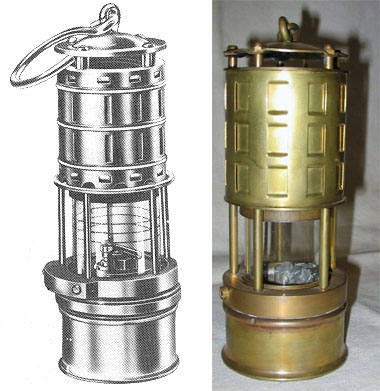| The PE-250 pump, designed for firefighting and
dewatering operations, was developed in 1973 to replace
the P-250 pump. It was a 250-gpm, portable, two-cycle,
two-cylinder, gasoline-driven pump, rated at 25
horsepower. Ignition was by electric starter. Type 2190
TEP lubricating oil was mixed with the 80- to 100-octane
gasoline; no other lubrication was required. With a fuel
rate of 5.4 gallons per hour, the six-gallon fuel tank
provided one hour of operation. The pump consisted of an
engine, battery, starter, centrifugal pump, primer pump,
water outlet gate, pressure regulator, self-winding pull
starter, back-up motor controls, and a pressure
regulator with gauge. Spare batteries were maintained on
charge in case of problems with the electric start
function. Accessories provided with the pump included a
special tri-gate valve with two 1 ½-inch and one 2
½-inch male connections, a 3-inch by 10-foot hard rubber
suction hose, a 2-inch by 20-foot exhaust hose, and a
foot valve strainer. The pump was self-priming up to 16
feet; manual priming was required for greater suction
lifts. The 2 ½-inch discharge hose could be connected to
an eductor for lifts above 20 feet. A 3-inch male
suction connection and the discharge side had a 2 ½-inch
male connection to attach a hose, wye-gate or tri-gate
for multiple hose runs in firefighting. The pump weighed
163 pounds including the battery but without the fuel
tank. Two personnel were required to transport the pump
and twelve to set up and rig it for operation using an
eductor. An electrician was required to be on standby to
assist with electrical-related start problems. In ship
wide or major emergencies, any member of the ship's
company could provide assistance in operating the pump;
otherwise pump teams from repair party lockers operated
the pump. The repair lockers with specific PE-250 teams
in Condition I were 1, 2, and sometimes 3 and 4,
depending on the ship’s class. Suitable means had to be
provided to carry the poisonous exhaust gases into the
clear, particularly when the pump was used below decks.
A 2-inch by 20-foot rubber exhaust hose was coupled to
the exhaust outlet to remove the gases through an
alternate overboard discharge connection or to the
weather deck when operating on the DC deck and below.
After being operated with sea water, the PE-250 pump had
to be flushed and drained with fresh water before
restoring. Pumps were generally stowed topside in water-
and fume-proof sealed covers for safety because of the
gasoline tanks, as well as to reduce salt water
corrosion. The PE-250 pump was replaced in 1985 with the
P-250 Mod-1 pump. |



